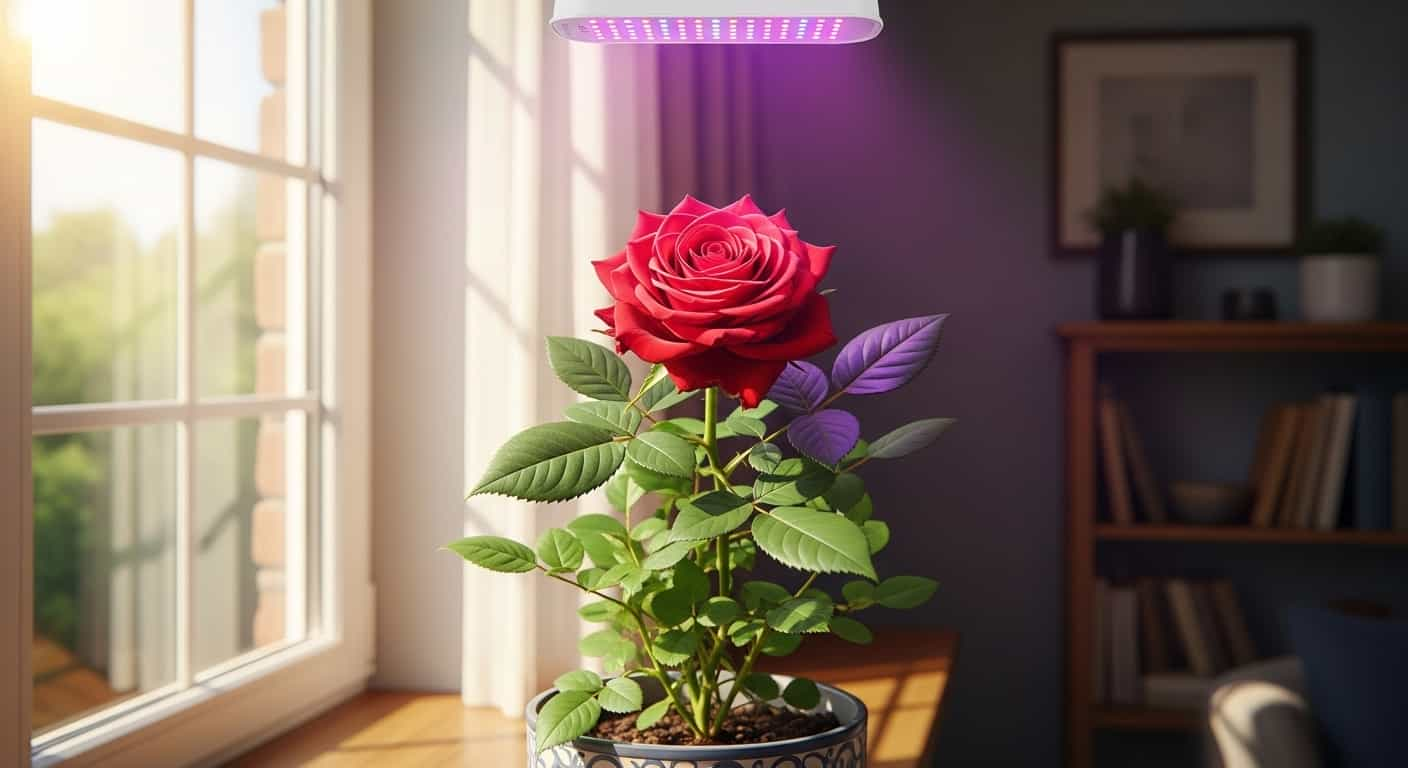Bringing the timeless elegance of roses indoors can transform a home, but getting these sun-loving plants to bloom prolifically away from the garden presents a unique challenge. After mastering soil and watering, the next critical element to conquer is light. Roses are famously dependent on the sun, using its energy to fuel the growth of lush foliage and, most importantly, those coveted, beautiful blooms. Without adequate light, an indoor rose will struggle, appearing weak, leggy, and disappointingly flowerless.
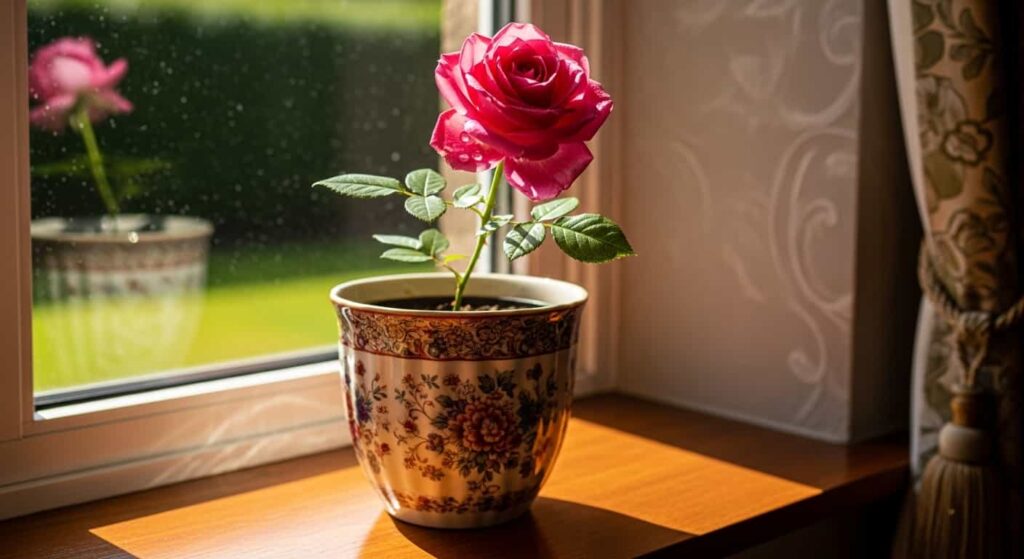
Understanding the specific light requirements for indoor roses is not just helpful; it’s essential for their survival and success. The average indoor environment is significantly darker than a rose would experience outdoors, even on a cloudy day. Simply placing your plant near any window might not be enough. The direction the window faces, the time of year, and potential obstructions all play a massive role in the quantity and quality of light your plant receives.
This guide will serve as your complete resource for mastering the light needs of your indoor roses. We will dive deep into why sunlight is so crucial, determine exactly how much light your roses need to thrive, identify the best (and worst) locations in your home, and explore how to effectively supplement natural light with grow lights. Get ready to learn how to provide the perfect sun-drenched environment that will encourage your indoor roses to flourish.
The Power of Light: Why Sunlight is Non-Negotiable for Roses
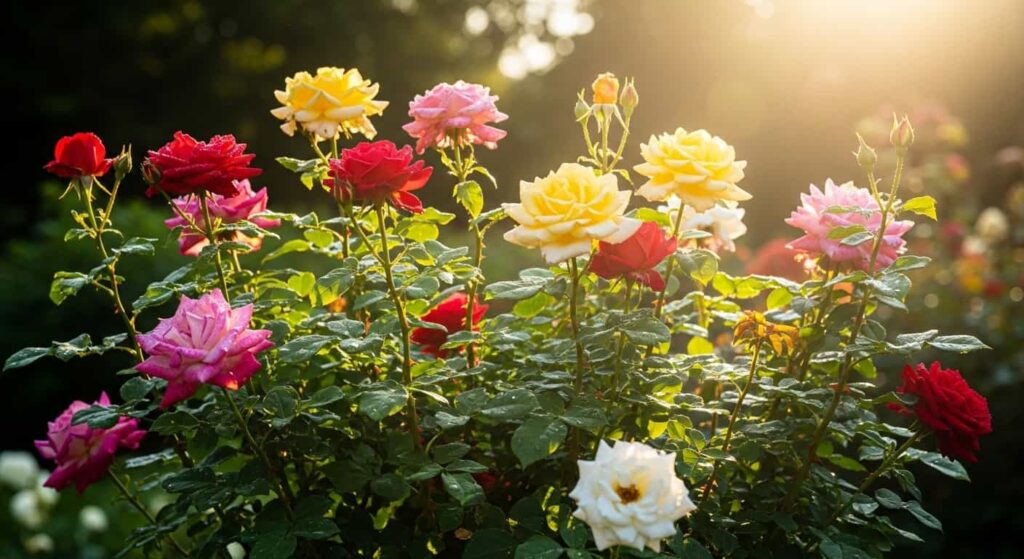
Light is the food that fuels almost all plant life through the process of photosynthesis. For a heavy-blooming plant like a rose, this process is especially demanding. Sunlight provides the energy needed to convert water and carbon dioxide into the sugars that power every function of the plant, from developing strong roots to producing vibrant flowers.
1. Fuel for Blooming: The primary reason roses need so much light is to flower. Producing blooms is an energy-intensive process. A rose that receives insufficient light will go into survival mode, conserving its limited energy for basic functions like maintaining its leaves. It simply won’t have the surplus energy required to form buds and flowers. This is the most common reason indoor roses fail to bloom.
2. Strong, Compact Growth: Light dictates a plant’s growth habits. With ample direct sunlight, a rose will grow strong, sturdy stems and a full, bushy form. When light is inadequate, the plant will begin to stretch towards the nearest light source. This results in a condition called etiolation, characterized by long, weak, spindly stems with large gaps between the leaves. This “leggy” growth is not only unattractive but also makes the plant structurally weak and more susceptible to pests and diseases.
3. Healthy Foliage: Photosynthesis occurs in the leaves, and sufficient light is necessary to maintain their rich, green color. Without enough light, you may notice the leaves turning a pale green or even yellow. The plant may also start to drop leaves, particularly the lower ones, as it can no longer support foliage that isn’t contributing significantly to energy production.
4. Disease Prevention: Bright, direct light and the accompanying warmth help keep the foliage dry, creating an environment that is less hospitable to common fungal diseases like powdery mildew and black spot. Damp, shaded conditions are a breeding ground for these pathogens. Good light exposure, combined with proper air circulation, is a key part of an effective disease prevention strategy.
How Much Sunlight Do Indoor Roses Actually Need?
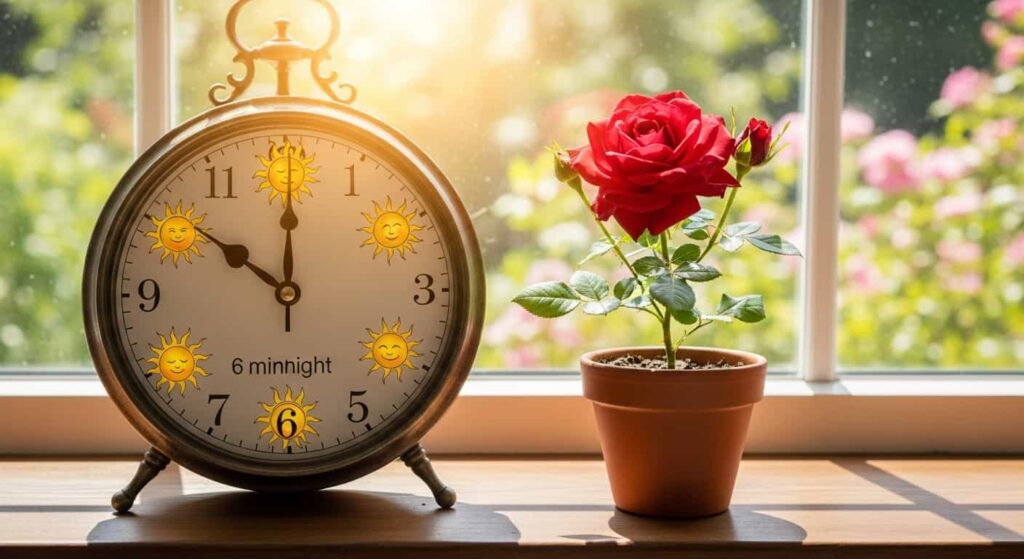
To put it simply: a lot. Outdoor roses are typically recommended for locations that receive a minimum of six to eight hours of direct, unfiltered sunlight per day. Replicating this indoors is the goal, though it can be challenging.
The Golden Standard: 6+ Hours of Direct Sunlight
For your indoor rose to truly thrive and produce consistent blooms, you should aim to provide it with at least six hours of direct sunlight each day. “Direct sunlight” means the sun’s rays are hitting the leaves of the plant without being filtered through trees, other buildings, or sheer curtains.
Anything less than this, and you will likely see a decline in the plant’s health and flowering capacity.
- 4-5 hours of direct light: The rose may survive and produce a few leaves, but it is unlikely to bloom. Growth will be slower and potentially leggy.
- Less than 4 hours of direct light: The plant will likely decline over time. It may exhibit severe etiolation, yellowing leaves, and will not flower.
It’s important to remember that the intensity of sunlight through a window is significantly less than it is outdoors. Glass filters out some of the light spectrum, and the angle of the sun changes throughout the day and year, further reducing the effective hours of direct light.
Finding the Perfect Spot: Best Window Locations in Your Home
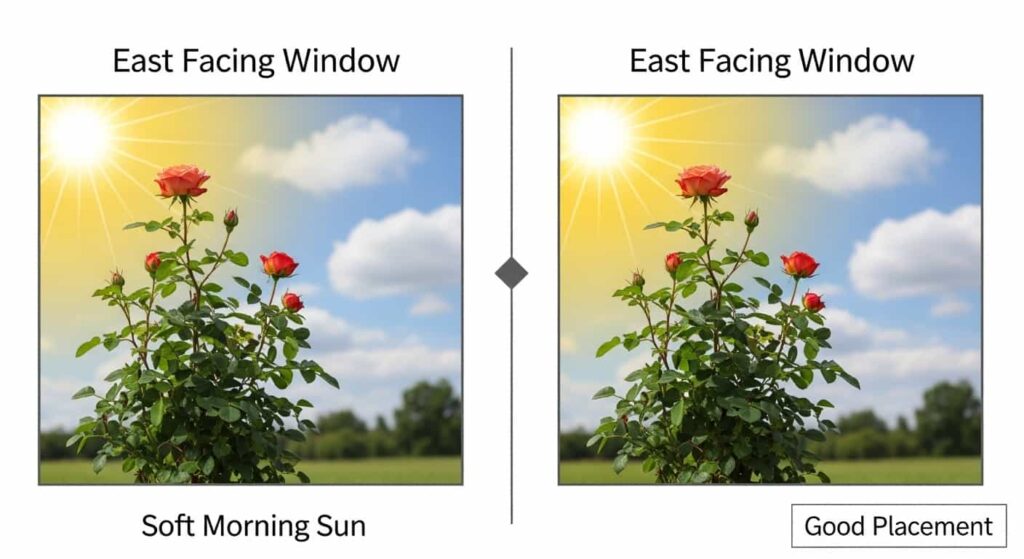
The direction your windows face is the single most important factor in determining the amount of natural light available for your rose. Each exposure offers a different intensity and duration of light.
The Champion: South-Facing Windows
A south-facing window is, without a doubt, the best possible location for an indoor rose in the Northern Hemisphere. These windows provide the most intense and longest-lasting direct sunlight throughout the day. A plant placed in an unobstructed south-facing window has the best chance of receiving the 6+ hours of direct light it needs to bloom profusely.
- Pros: Delivers strong, direct light for most of the day, all year round. It’s the ideal placement for sun-loving plants.
- Cons: Can get very hot, especially in the summer. You may need to ensure the plant doesn’t get scorched and that the soil doesn’t dry out too quickly. Keep leaves from touching the hot glass.
The Excellent Runner-Up: West-Facing Windows
A west-facing window is another great option. It provides several hours of very strong, direct afternoon and evening sun. While it may not get the all-day light of a southern exposure, the intensity of the afternoon sun is powerful.
- Pros: Provides several hours of high-intensity direct sunlight, which is excellent for blooming.
- Cons: The intense afternoon heat can be stressful for the plant in the peak of summer. Be extra vigilant about watering, as the soil will dry out quickly.
The Acceptable Alternative: East-Facing Windows
An east-facing window offers several hours of direct morning sun. This light is less intense and cooler than the afternoon sun from a west-facing window. While it is a good location for many houseplants, it is borderline for a demanding rose. A rose in an east-facing window may survive but might struggle to produce a significant number of blooms without supplemental lighting.
- Pros: Provides gentle, direct morning light that is less likely to scorch the plant.
- Cons: Often does not provide the full six hours of direct light required for robust blooming.
The Last Resort: North-Facing Windows
A north-facing window should be avoided for indoor roses. These windows receive no direct sunlight at any point during the day. They offer only indirect, low-level light, which is completely insufficient for a rose. A rose placed in a north-facing window will quickly become etiolated, weak, and will never flower.
- Pros: None for a rose.
- Cons: No direct sunlight. Entirely unsuitable for sun-loving plants.
Monitoring Your Chosen Spot: Once you’ve chosen a location, observe it. Track how many hours the sun’s rays are physically touching your plant’s leaves. Are there trees outside that block the light for part of the day? Does a neighboring building cast a shadow in the afternoon? Adjust the plant’s position to maximize its time in the sun.
When Nature Isn’t Enough: Supplementing with Grow Lights
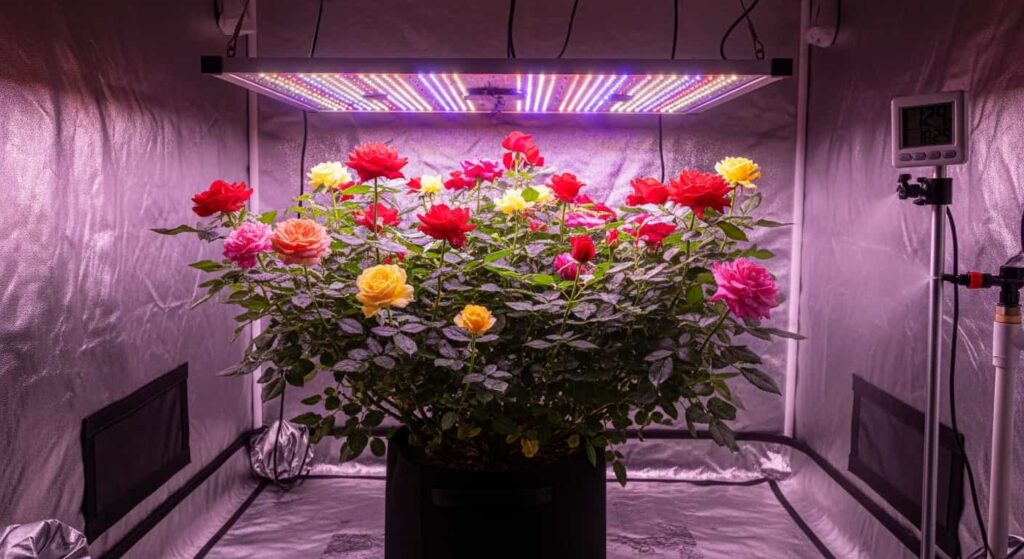
For many people, a location with six hours of direct, natural sunlight is simply not available. This is where technology comes to the rescue. Grow lights are an incredibly effective way to supplement natural light or even serve as the sole light source for your indoor roses, allowing you to grow them successfully anywhere in your home.
Why Use a Grow Light?
- To Supplement Insufficient Natural Light: If your east-facing window only provides four hours of sun, you can run a grow light for an additional 4-6 hours to meet the plant’s needs.
- To Overcome Winter Gloom: During the short, gray days of winter, even a south-facing window may not provide enough light. A grow light can bridge this gap and keep your rose healthy.
- To Grow Roses Anywhere: With a powerful enough grow light setup, you can grow a thriving rose in a windowless basement or a dark corner of a room.
Choosing the Right Grow Light
The world of grow lights can be confusing, with terms like lumens, PAR, and Kelvin. Here’s a simplified breakdown of what matters for your rose.
1. Type of Light: Full-Spectrum LED is Best
- LED (Light Emitting Diode): This is the top choice for home growers. Modern full-spectrum LED grow lights are energy-efficient, produce very little heat, and have a long lifespan. “Full-spectrum” means they mimic the natural spectrum of sunlight, providing all the wavelengths a plant needs for both vegetative growth and flowering.
- Fluorescent: T5 fluorescent bulbs are another option. They are effective but less energy-efficient and have a shorter lifespan than LEDs. They are best for providing supplemental light over a short distance.
- Incandescent: Avoid standard incandescent bulbs. They produce too much heat and not the right kind of light for healthy plant growth.
2. Intensity and Duration:
For a flowering plant like a rose, you need a reasonably powerful light. Look for grow light bulbs or fixtures that are specifically marketed for “flowering” or “fruiting” plants, not just for seedlings or herbs.
- Duration: When using a grow light, you need to run it for a much longer period than the sun is out. Aim to have the grow light on for 12-16 hours per day. Plants also need a period of darkness to respire, so do not leave the light on 24/7. A simple outlet timer is an invaluable tool for automating this schedule.
- Distance: The distance between the light and the plant is critical. The closer the light, the higher the intensity. Follow the manufacturer’s recommendation, but a general rule is to position LED lights 6-12 inches above the top of the plant. If you see white or burnt spots on the leaves, the light is too close. If the plant is stretching, the light is too far away.
3. Setting Up Your Grow Light:
- You can purchase grow light bulbs that fit into standard lamps or clamp light fixtures, making it easy to direct light exactly where it’s needed.
- Ensure the light is positioned directly above the plant to encourage even, upright growth rather than leaning.
- As the plant grows, you will need to adjust the height of the light to maintain the optimal distance.
By combining the best possible natural light exposure with smart supplemental lighting, you can create the perfect high-energy environment for your indoor rose. This investment of effort will be rewarded with a strong, healthy plant that is capable of producing the stunning, fragrant blooms that make roses so beloved.

